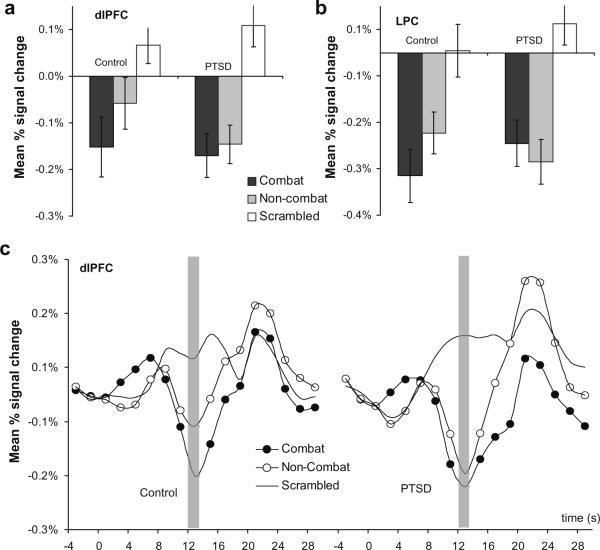Fig. 5.
Comparison of mean percent signal change in dorsal executive regions corresponding to combat, non-combat, and scrambled distractors displayed during the active maintenance period of working memory in the PTSD (n = 22) and control (n = 20) groups. (a) Combat related distractors showed differential dlPFC deactivation in the control group but not in the PTSD group. (b) There was a trend level group by distractor type interaction effect in the lateral parietal cortex (LPC). (c) Mean percent signal change for the entire trial epoch by condition in the dlPFC for the control Group and the PTSD group.

